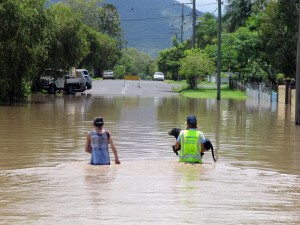The local view
· Flood insurance is not included in a standard homeowner’s policy.
· There are two kinds of flood insurance: building and contents. They must be purchased separately.
· It covers physical damage to a building or personal property “directly” caused by flooding. For example, a sewer backup wouldn’t be covered unless it was the result of a flood.
· Flood insurance does not pay more than a policy limit.
· FEMA recommends keeping receipts for electronic equipment, wall-to-wall carpeting, major appliances and other high-cost items.
· Flood insurance coverage is limited in areas below ground where it does not include things like paneling, bookcases, floor treatments, drywall and most personal property.
What’s covered under building property flood insurance:
· The building and its foundation.
· Electrical and plumbing systems.
· HVAC, water heater and built-in appliances.
· Permanently installed carpeting, paneling and cabinets.
· Detached garages.
· Debris removal.
What’s covered under personal property flood insurance:
· Personal belongings such as clothing, furniture and electronics.
· Portable air conditioners, microwave ovens, portable dishwashers and area rugs.
· Washers and dryers.
· Freezers and their contents.
· Artwork and furs up to $2,500.
· Personal property is always valued at Actual Cash Value (purchase cost minus depreciation).
What’s not covered under flood insurance:
· Damage by moisture, mildew or mold that could have been avoided by the property owner.
· Currency, precious metals and valuable papers.
· Exterior items such as landscaping, patios and swimming pools.
· Financial loss from business interruption.
· Most vehicles.
Source: FEMA
Additional information and a list of insurance providers can be found at FEMA’s flood insurance website.
Bill Ackerman, president of Ackerman Insurance Services in Naples, Fla., has a simple method of determining whether someone needs flood insurance.
“Look at your driver’s license and if it says the state of Florida on it you need to buy flood insurance. That’s how you determine whether or not you’re in a flood zone,” Ackerman says. “It just makes good sense considering this is probably somebody’s most valuable asset, especially if you can get the preferred flood rate.”
Naples is in Collier County, which is facing an increase in flooding designations under new maps that were first announced in July 2010 and go into effect in May of this year. For this reason, Ackerman says his business has seen a fivefold increase in people buying flood insurance.
In addition to the new maps taking rainfall into account, Ackerman says proximity to lakes and retaining ponds have also added to an increase in flood zones.
“They’ve put all of Collier County into a flood zone, which, probably should’ve always been that way. I mean, it is Southwest Florida, so it’s basically all swamp,” Ackerman says.
Ackerman says local officials worked out a compromise with FEMA whereby homeowners who buy flood insurance before the new maps go into effect will get two renewals under the PRP rate, allowing them to save money for three years and reduce the financial impact of having to buy flood insurance.
While those with mortgages are required to buy flood insurance, Ackerman says he’s also seen an increase in business from those without mortgages. Some of them either didn’t have flood insurance to begin with or dropped it to save money.
“They are showing a little bit of interest, which is odd to me because the fact that the zone changed doesn’t increase the real chances of their property flooding. In other words, nothing has changed on their property, only the analysis of it has,” Ackerman says. “I’ve got a lot of clients that don’t have mortgages and have decided that since the flood zone changed they should get a flood policy.”

When disaster strikes
Those without flood insurance might be gambling that the government will step in to help them out, or they might simply be unaware that their homeowner’s policy doesn’t cover floods.
Ackerman says people in Florida are well aware that their regular homeowners insurance doesn’t cover flooding, but those who aren’t required to buy flood insurance have been willing to risk going without it to save money on premiums.
If a flood does happen, those without FEMA-backed insurance might qualify for low interest loans, but these are only offered if a national disaster has been declared. Kinerney says the homeowner must be able to pay the loan back and the home must be restored, so the loan acts as a kind of second mortgage.
Anyone receiving a disaster loan also gets three years of free flood insurance but has to take out their own policy after that, for the property will not be eligible for a second loan if a flood strikes again. Even if a home is sold, the insurance requirement stays with the property.
Ackerman says many of those who go without flood insurance could be choosing to just assume the risk themselves, or they could be unaware that federal assistance after a disaster comes in the form of loans rather than grants.
“I don’t know if people understand how federal disaster loans work and that they have to be paid back by the individual, I guess if they knew that they probably would be more apt to buy flood insurance,” Ackerman says.
Ackerman recommends that his clients get the maximum insurance possible, particularly since he works in an area with expensive homes whose values exceed the maximum $250,000 limits for buildings and $100,000 for contents. He says it’s also possible to buy excess flood insurance in the private market, for losses that exceed these limits, but most homeowners go without it as the premiums are expensive.












